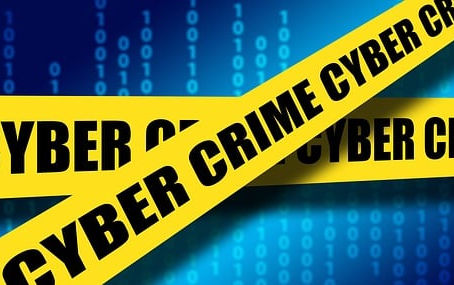Cybersecurity Case Studies and Real-World Examples
Share

image courtesy pixabay.com
In the ever-evolving landscape of cybersecurity, the battle between hackers and defenders continues to shape the digital domain. To understand the gravity of cybersecurity challenges, one need only examine real-world examples—breaches that have rocked industries, compromised sensitive data, and left organizations scrambling to shore up their defenses. In this exploration, we’ll dissect notable cybersecurity case studies, unravel the tactics employed by cybercriminals, and extract valuable lessons for strengthening digital defenses.
Equifax: The Breach that Shattered Trust
The Breach
In 2017, Equifax, one of the largest credit reporting agencies, fell victim to a massive data breach that exposed the personal information of nearly 147 million individuals. The breach included sensitive data such as names, Social Security numbers, birthdates, and addresses, leaving millions vulnerable to identity theft and fraud.
Lessons Learned
1. Patch Management is Crucial:
The breach exploited a known vulnerability in the Apache Struts web application framework. Equifax failed to patch the vulnerability promptly, highlighting the critical importance of timely patch management. Organizations must prioritize staying current with security patches to prevent known vulnerabilities from being exploited.
2. Transparency Builds Trust:
Equifax faced severe backlash not only for the breach itself but also for its delayed and unclear communication with affected individuals. Transparency in communication is paramount during a cybersecurity incident. Organizations should proactively communicate the extent of the breach, steps taken to address it, and measures for affected individuals to protect themselves.
Target: A Cybersecurity Bullseye
The Breach
In 2013, retail giant Target suffered a significant breach during the holiday shopping season. Hackers gained access to Target’s network through a third-party HVAC contractor, eventually compromising the credit card information of over 40 million customers and the personal information of 70 million individuals.
Lessons Learned
1. Third-Party Risks Require Vigilance:
Target’s breach underscored the risks associated with third-party vendors. Organizations must thoroughly vet and monitor the cybersecurity practices of vendors with access to their networks. Note that a chain is only as strong as its weakest link.
2. Advanced Threat Detection is Vital:
Target failed to detect the initial stages of the breach, allowing hackers to remain undetected for an extended period. Implementing robust advanced threat detection systems is crucial for identifying and mitigating breaches in their early stages.
WannaCry: A Global Ransomware Epidemic
The Breach
In 2017, the WannaCry ransomware swept across the globe, infecting hundreds of thousands of computers in over 150 countries. Exploiting a vulnerability in Microsoft Windows, WannaCry encrypted users’ files and demanded ransom payments in Bitcoin for their release.
Lessons Learned
1. Regular System Updates are Non-Negotiable:
WannaCry leveraged a vulnerability that had been addressed by a Microsoft security update months before the outbreak. Organizations fell victim due to delayed or neglected updates. Regularly updating operating systems and software is fundamental to thwarting ransomware attacks.
2. Backup and Recovery Planning is Essential:
Organizations that had robust backup and recovery plans were able to restore their systems without succumbing to ransom demands. Implementing regular backup procedures and testing the restoration process can mitigate the impact of ransomware attacks.
Sony Pictures Hack: A Cyber Espionage Saga
The Breach
In 2014, Sony Pictures Entertainment became the target of a devastating cyberattack that exposed an array of sensitive information, including unreleased films, executive emails, and employee records. The attackers, linked to North Korea, sought to retaliate against the film “The Interview,” which portrayed the fictional assassination of North Korea’s leader.
Lessons Learned
1. Diverse Attack Vectors:
The Sony hack demonstrated that cyber threats can come from unexpected sources and employ diverse attack vectors. Organizations must not only guard against common threats but also be prepared for unconventional methods employed by cyber adversaries.
2. Nation-State Threats:
The involvement of a nation-state in the attack highlighted the increasing role of geopolitical motivations in cyber incidents. Organizations should be aware of the potential for state-sponsored cyber threats and implement measures to defend against politically motivated attacks.
Marriott International: Prolonged Exposure and Ongoing Impact
The Breach
In 2018, Marriott International disclosed a data breach that had persisted undetected for several years. The breach exposed personal information, including passport numbers, of approximately 500 million guests. The prolonged exposure raised concerns about the importance of timely detection and response.
Lessons Learned
1. Extended Dwell Time Matters:
Marriott’s breach highlighted the significance of dwell time—the duration a threat actor remains undetected within a network. Organizations should invest in advanced threat detection capabilities to minimize dwell time and swiftly identify and mitigate potential threats.
2. Post-Breach Communication:
Marriott faced criticism for the delayed communication of the breach to affected individuals. Prompt and transparent communication is vital in maintaining trust and allowing individuals to take necessary actions to protect themselves.
SolarWinds Supply Chain Attack: A Wake-Up Call
The Breach
In late 2020, the SolarWinds supply chain attack sent shockwaves through the cybersecurity community. Sophisticated threat actors compromised SolarWinds’ software updates, enabling them to infiltrate thousands of organizations, including government agencies and major corporations.
Lessons Learned
1. Supply Chain Vulnerabilities:
The incident underscored the vulnerability of the software supply chain. Organizations must conduct thorough assessments of their suppliers’ cybersecurity practices and scrutinize the security of third-party software and services.
2. Continuous Monitoring is Essential:
The SolarWinds attack highlighted the importance of continuous monitoring and threat detection. Organizations should implement robust monitoring systems to identify anomalous behavior and potential indicators of compromise.
Notable Lessons and Ongoing Challenges
1. Human Element:
Many breaches involve human error, whether through clicking on phishing emails or neglecting cybersecurity best practices. Cybersecurity awareness training is a powerful tool in mitigating the human factor. Employees should be educated on identifying phishing attempts, using secure passwords, and understanding their role in maintaining a secure environment.
2. Zero Trust Architecture:
The concept of Zero Trust, where trust is never assumed, has gained prominence. Organizations should adopt a mindset that verifies every user, device, and network transaction, minimizing the attack surface and preventing lateral movement by potential intruders.
3. Cybersecurity Collaboration:
Cybersecurity is a collective effort. Information sharing within the cybersecurity community, between organizations, and with law enforcement agencies is crucial for staying ahead of emerging threats. Collaborative efforts can help identify patterns and vulnerabilities that may not be apparent to individual entities.
4. Regulatory Compliance:
The landscape of data protection and privacy regulations is evolving. Compliance with regulations such as GDPR, HIPAA, or CCPA is not only a legal requirement but also a cybersecurity best practice. Understanding and adhering to these regulations enhances data protection and builds trust with customers.
5. Encryption and Data Protection:
The importance of encryption and data protection cannot be overstated. In various breaches, including those of Equifax and Marriott, the compromised data was not adequately encrypted, making it easier for attackers to exploit sensitive information. Encrypting data at rest and in transit is a fundamental cybersecurity practice.
6. Agile Incident Response:
Cybersecurity incidents are inevitable, but a swift and agile incident response is crucial in minimizing damage. Organizations should regularly test and update their incident response plans to ensure they can respond effectively to evolving threats.
7. User Awareness and Training:
Human error remains a significant factor in many breaches. User awareness and training programs are essential for educating employees about cybersecurity risks, promoting responsible online behavior, and reducing the likelihood of falling victim to phishing or social engineering attacks.
8. Continuous Adaptation:
Cyber threats constantly evolve, necessitating a culture of continuous adaptation. Organizations should regularly reassess and update their cybersecurity strategies to address emerging threats and vulnerabilities.
Conclusion: Navigating the Cybersecurity Landscape
The world of cybersecurity is a battlefield where the landscape is ever-changing, and the adversaries are relentless. Real-world case studies serve as poignant reminders of the importance of proactive cybersecurity measures. As organizations adapt to emerging technologies, such as cloud computing, IoT, and AI, the need for robust cybersecurity practices becomes more pronounced. Real-world case studies offer invaluable insights into the tactics of cyber adversaries and the strategies employed by organizations to defend against evolving threats.



Hi, I believe your website mmight be having browser compatibility
problems. Whenever I lokok att your blog in Safari, it looks fine but when opening in Internet
Explorer, it has some overlapping issues. I just wanted to provide you with
a quick heads up! Other than that, excellent blog!
Consider opening in chrome or Microsoftedge.
Thank you for the comments
Hey! Loved your post.
Thank you
This was a very insightful read. I learned a lot from it.
This is fantastic! Please continue with this great work.
Thank you for addressing such an important topic in this post Your words are powerful and have the potential to make a real difference in the world
Your writing is so engaging and easy to read It makes it a pleasure to visit your blog and learn from your insights and experiences
Your blog posts are always full of valuable information, thank you! Share the post on Facebook.
This is a must-read article for anyone interested in the topic. It’s well-written, informative, and full of practical advice. Keep up the good work!
I just wanted to say how much I appreciate your work. This article, like many others on your blog, is filled with thoughtful insights and a wonderful sense of optimism. It’s evident that you put a lot of effort into creating content that not only informs but also uplifts. Thank you.
I am so grateful for the community that this blog has created It’s a place where I feel encouraged and supported
Thank you for this insightful article. It’s well-researched and provides a lot of useful information. I learned a lot and will definitely be returning for more.
Security Framework and Defense Mechanisms for IoT Reactive Jamming Attacks – Download ebook – https://mazkingin.com/security-framework-and-defense-mechanisms-for-iot-reactive-jamming-attacks/
Great job on this article! It’s packed with valuable information and written in a way that’s easy to follow. I’ll definitely be returning to read more from your blog. At the mean time,
I truly admire how you tackle difficult topics and address them in a respectful and thought-provoking manner
What a great read! This article is full of practical advice and real-world examples that make the content relatable and easy to understand. : nftbeyond.com